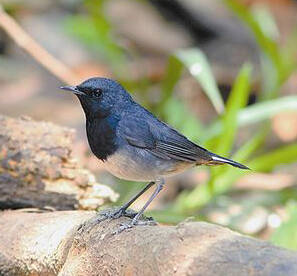
Blackthroat, foreign name Blackthroat, no subspecies.Regarding the taxonomic status of the black-throated robin, previous scholars such as Goodwin and Vaurie (1956), Zheng Zuoxin (1958), and Vaurie (1959) all believed that the black-throated robin was just a different color form of the golden-breast...

The Siberian Rubythroat is a songbird of the class Aves and family Flycatchers, with no subspecies.The Siberian Rubythroat is a migratory bird that breeds in the northernmost part of China in summer and migrates to the southernmost part of China in late autumn to spend the winter. It passes Qingdao...
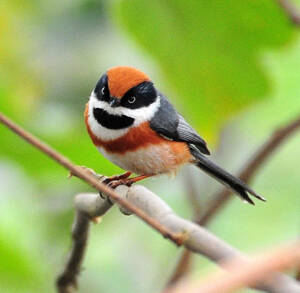
The Rufous-headed Robin is a very rare endangered species.The Rufous-headed Robin sings more in May. It is very good at singing. The song is loud and melodious, like other robins. The song is loud and powerful, with a heavy guttural sound, pleasant and intermittent, with a short interlude at the beg...
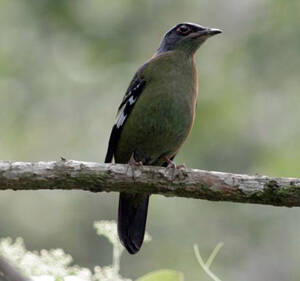
Green Cochoa, also known as Green Cochoa, is a bird of the family Thrushidae in the order Passeriformes, with no subspecies.The Green Broad-billed Thrush often moves alone or in pairs. During the spring and autumn migration seasons, it also gathers in small groups of several or more than 10 individu...
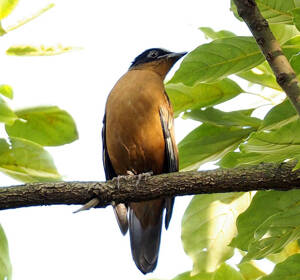
Purple Cochoa, also known as Purple Cochoa in English, is a bird of the genus Cochoa in the family Thrush family of the order Passeriformes, with no subspecies.Purple Broad-billed Thrush is quiet, timid and easily frightened. It moves in pairs or alone. It forages on the ground or among branches. It...
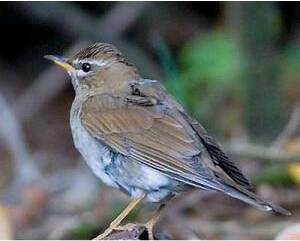
Grey-sided Thrush is a medium-sized bird of the family Thrushidae and the genus Thrush, with no subspecies.The lower body of the Brown-headed Thrush and the similar species White-browed Thrush (Eyebrowed Thrush) is orange-brown, and the male bird's head and neck are grayer; the White-bellied Thr...
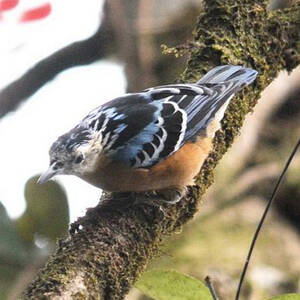
Beautiful Nuthatch, also known as Beautiful Nuthatch in English, is a small songbird with no subspecies.Beautiful Nuthatch usually lives in pairs or small groups on the tops of tall trees in valley forests. They mainly forage for insects under large trees with dense branches and leaves, including be...
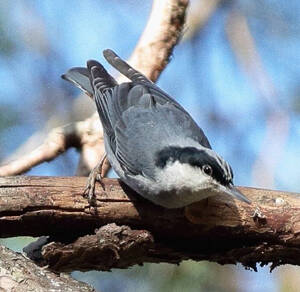
Giant Nuthatch, also known as Giant Nuthatch in English, is a small songbird with two subspecies.The giant nuthatch has the same living habits as the general nuthatch, and is more active. It is good at climbing up the tree trunk for a short distance, and is also good at climbing down the tree trunk...
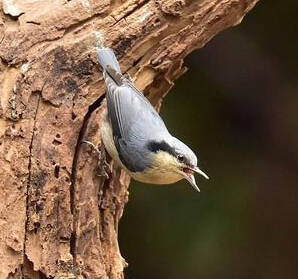
The Mandarin pronunciation of Yunnan Nuthatch is [diān shī], and its foreign name is Black-masked Nuthatch. It is a small songbird with no subspecies.Yunnan Nuthatch mostly moves alone or in small groups, and sometimes mixes with other small birds such as common magpies. The habits are the same as...
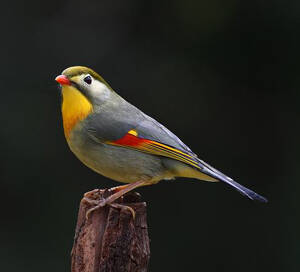
Red-billed Leiothrix has 5 subspecies. Red-billed Leiothrix is a resident bird. Except for the breeding period, it usually moves in pairs or alone. In other seasons, it usually moves in small groups of 3-5 or more than 10, and sometimes it also moves in mixed groups with other small birds. It...
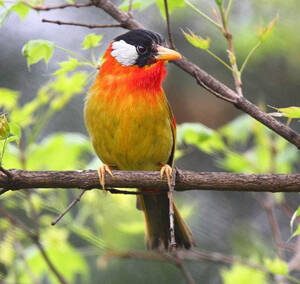
Silver-eared Mesia has 9 subspecies.Silver-eared Mesia often moves alone or in pairs, and sometimes in groups, especially in autumn and winter. It is lively and bold, not afraid of people, often jumping in the undergrowth or bamboo groves and in the open space in the forest. It rarely rests on trees...
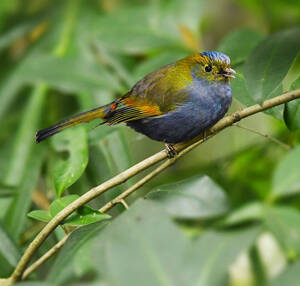
The foreign name of the Gray-breasted Bush Babbler is Omei Shan Liocichla, and there is no subspecies.Deignan (1964) believed that the gray-breasted bush thrush may be the same species as the yellow-spotted bush thrush (Liocichla steerii) distributed in Taiwan, China. Delacour (1933, 1946) believed...
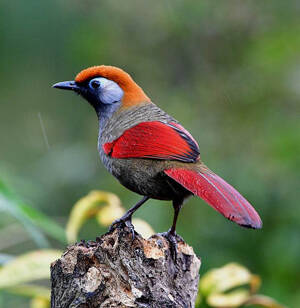
Red-tailed Laughingthrush, also known as Red-tailed Laughingthrush, has 4 subspecies.Red-tailed Laughingthrush often moves in pairs or in small groups of 3 to 5. It is timid and good at singing. Its singing is noisy. It hides in dense bushes at the slightest movement. You can often hear its voice bu...
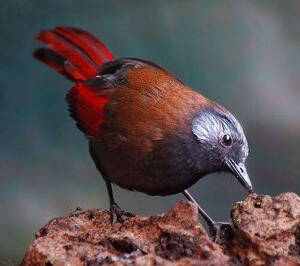
Red-winged Laughingthrush has two subspecies.Red-winged Laughingthrush often moves in pairs or small groups of several individuals, often shuttling and jumping between the undergrowth, and also frequently moving and foraging on the ground under the forest. It mainly feeds on insects and plant foods....

The orange-winged laughingthrush is also known as Elliot's Laughingthrush in English. It has two subspecies.In 2016, the Orange-winged Laughingthrush (Trochalopteron elliotii) was included in the Laughingthrush family and the "Colored-winged Laughingthrush" (Trochalopteron) from the Ga...

The foreign name of the brown babbler is Rusty Laughingthrush, and there are three subspecies. Dickinson (2003) divided the brown babbler (G.poecilorhynchus) into three subspecies. Some scholars believe that the named subspecies of Brown Noisy Babbler (G.p. poecilorhynchus) is significantly differen...
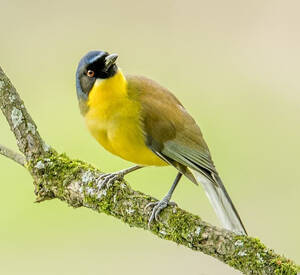
Blue-crowned laughingthrush is a small-bodied bird of the family Timalis, with no subspecies.There are dozens of species of Laughingthrush distributed in southern China. Although there are also rare species such as Chestnut-necked Laughingthrush and Brown Laughingthrush, the Indigo-crowned Laughingt...
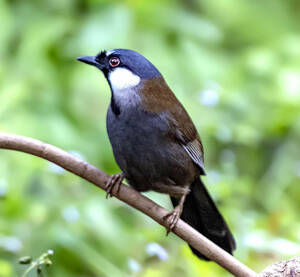
Black-throated Laughingthrush, also known as Black-throated Laughingthrush, has 5 subspecies.Black-throated Laughingthrush is a resident bird. It often moves in small groups of several or more than 10 individuals, and occasionally it is seen moving alone or in pairs. They often jump around in the bu...
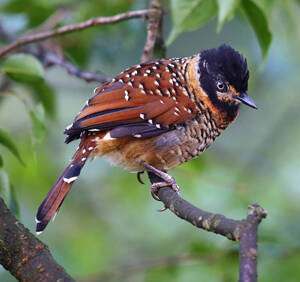
Spotted Laughingthrush, also known as Spotted Laughingthrush, has 4 subspecies.Eye-striped Laughingthrush often moves in pairs or small groups, mostly moving and foraging among the bushes under the forest or on the ground, and occasionally making calls of "Kagui, Gui, Gui..." During the br...
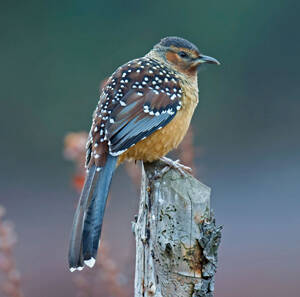
Giant Laughingthrush, foreign name, no subspecies.The Great Laughingthrush is smaller than the similar species, the Eye-striped Laughingthrush, and has a shorter tail. It has a black throat and neck, and black and white horizontal stripes on its chest. The difference is obvious and it is not difficu...